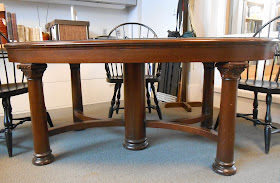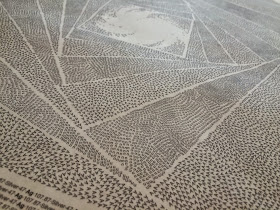 In 1905, Russia and Japan signed the peace treaty that ended the Russo-Japanese War. Though brief in duration, the war was a harbinger of the coming mechanized conflict that tore the world apart in 1914. The treaty was signed at the Portsmouth Naval Shipyard in Kittery, Maine, just across the border from Portsmouth, New Hampshire.
In 1905, Russia and Japan signed the peace treaty that ended the Russo-Japanese War. Though brief in duration, the war was a harbinger of the coming mechanized conflict that tore the world apart in 1914. The treaty was signed at the Portsmouth Naval Shipyard in Kittery, Maine, just across the border from Portsmouth, New Hampshire.That same year, John Bartlett, Dartmouth 1894, purchased "one of the mahogany tables used in the Peace Conference room." Though not the "large table... at which they sat when they did their actual diplomatic sparring," it was "one of the side tables around which one party or the other gathered when they wanted to whisper to each other." He then offered the table to Dartmouth President William Tucker in the hope that it would be used either in "some reading room" or as a "centre table or reference table." After a bit of prompting, Tucker accepted the gift, complete with an engraved silver plate commemorating the Treaty signing.
Another Dartmouth link to the treaty is Asakawa Kan’ichi, Dartmouth 1899, the first Japanese student to attend Dartmouth. Asakawa was a professor at Dartmouth from 1902-1906 and President Tucker paid Asakawa's expenses to attend the proceedings, presumably as part of Asakawa's ongoing research into the conflict and its resolution. This trip may have helped provide material for his article in the Atlantic Monthly on "Korea and Manchuria Under the New Treaty."
To see the table in its current home, come in to Rauner. Ask for the vertical file "Portsmouth, Treaty of, Table" for more information. To read Asakawa's article, ask for Alumni A798k.

